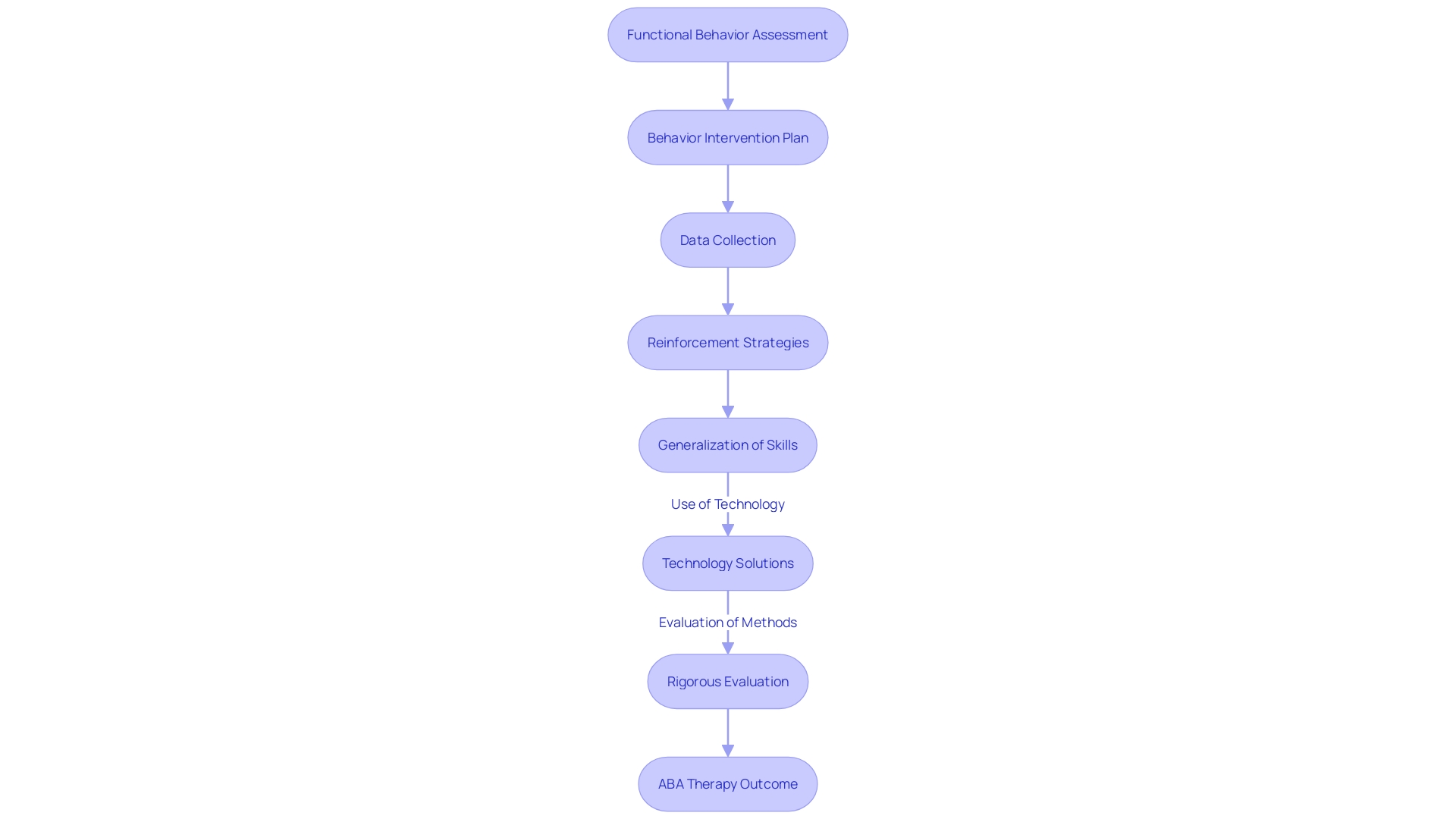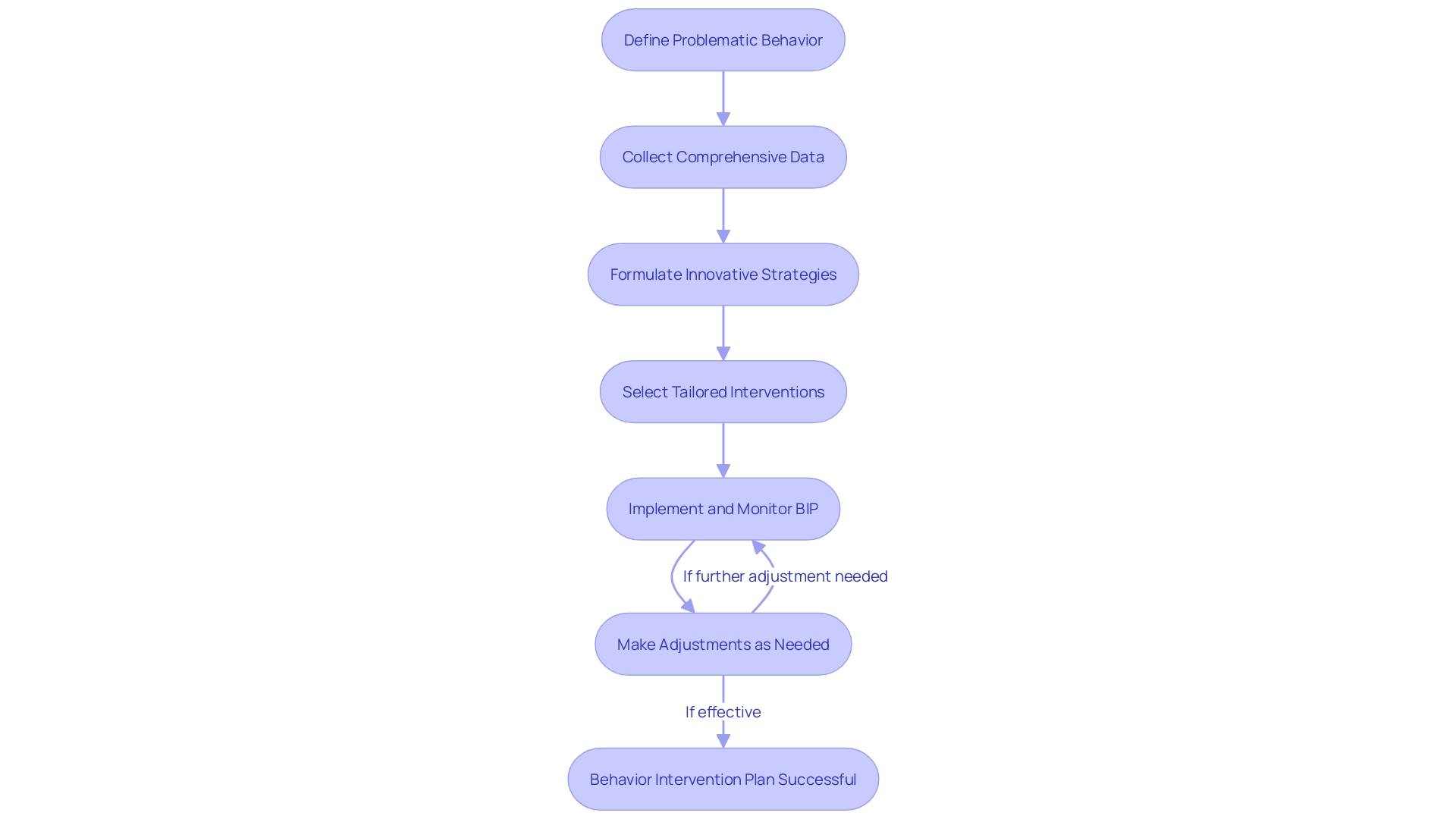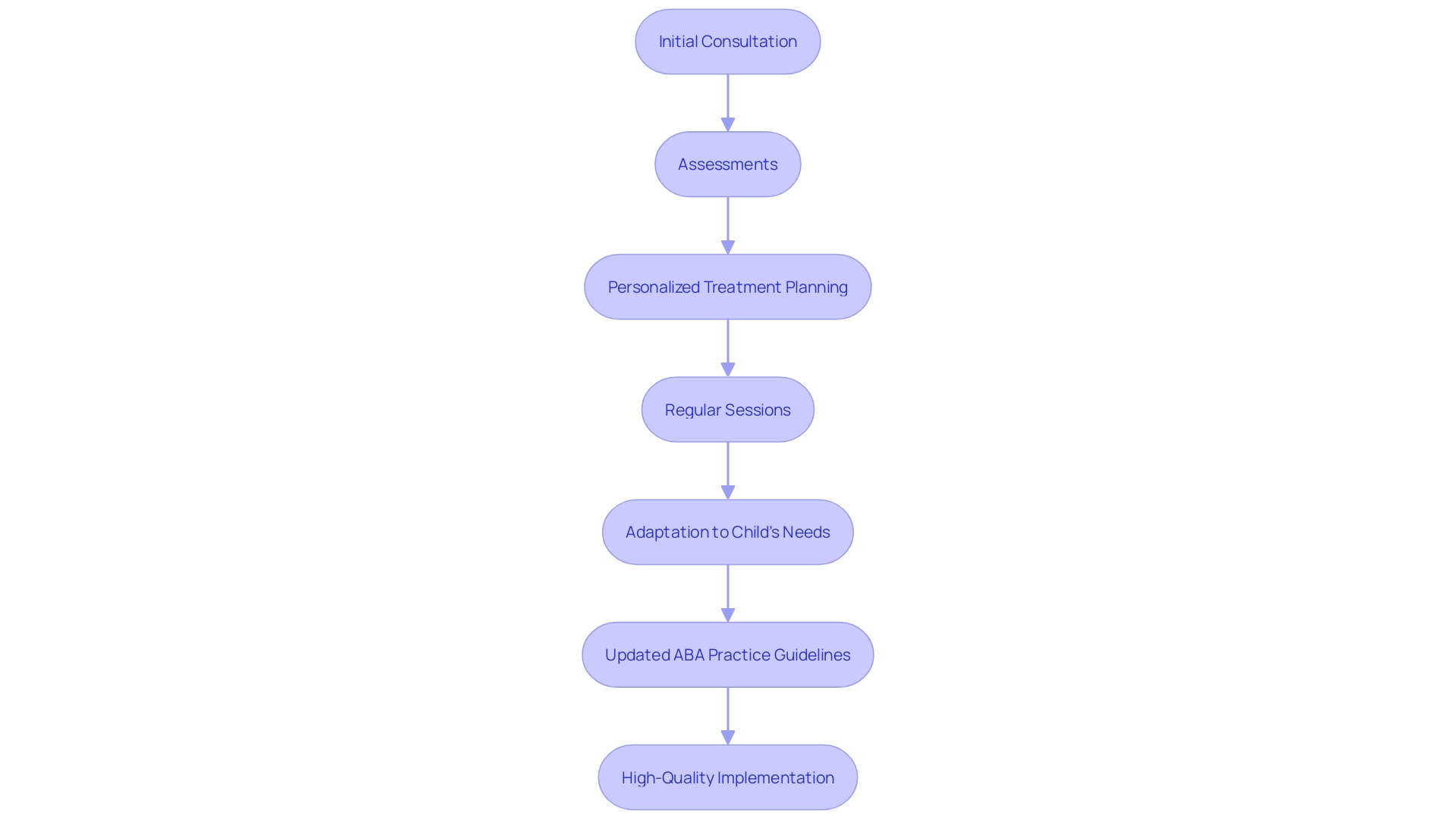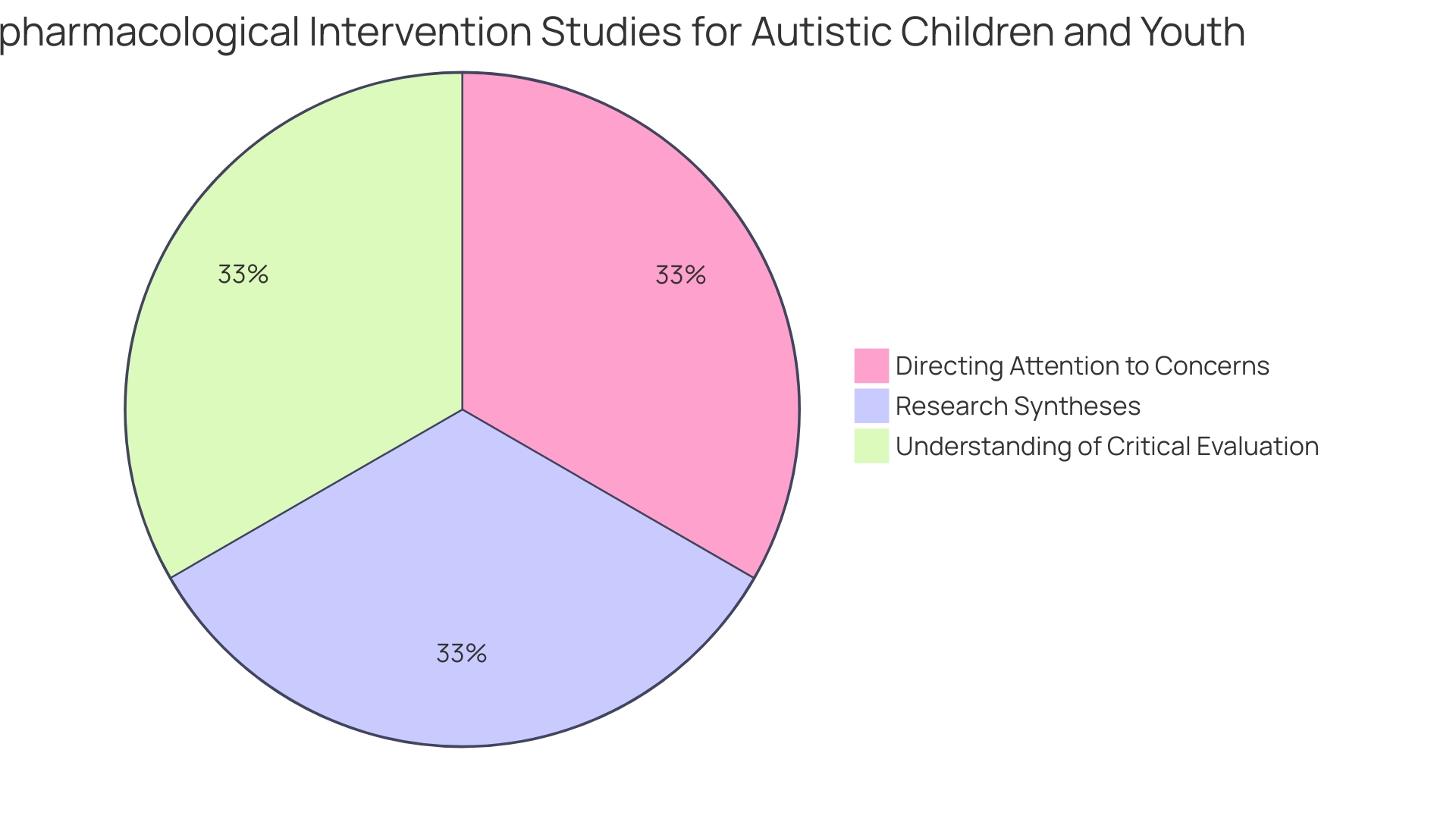Introduction
Applied Behavior Analysis (ABA) therapy is a transformative approach that supports individuals with Autism Spectrum Disorder (ASD) and other developmental challenges. This data-driven therapy focuses on behavior analysis and modification to enhance social interactions, communication, learning, and adaptive skills. ABA therapy is personalized to meet each individual's unique needs and is guided by Board-Certified Behavior Analysts (BCBAs) who bring extensive clinical knowledge and experience.
The integration of evidence-based practices is crucial in ABA therapy, ensuring that interventions are scientifically sound and resonate with the individuals and communities served. The article explores the benefits of ABA programs, key components of ABA therapy, the process of creating a Behavior Intervention Plan (BIP), implementing and monitoring ABA programs, common challenges and solutions, best practices for effective intervention, and additional resources available for parents and professionals. By providing guidance and resources, this article empowers Parent Advocates to navigate challenges and ensure the well-being of their children.
What is ABA Therapy?
Applied Behavior Analysis (ABA) therapy is a data-driven treatment modality that is critical in supporting individuals with Autism Spectrum Disorder (ASD) and other developmental challenges. The therapy's foundation rests on the meticulous analysis of behavior and its modification to foster improved social interactions, communication, learning, and adaptive skills, thus enhancing the individual's overall quality of life.
The efficacy of ABA therapy lies in its personalized approach, which is tailored to each individual's needs and abilities. A key professional in this field is a Board-Certified Behavior Analyst (BCBA), who brings extensive clinical knowledge and experience to the table. These professionals are not only involved in direct patient care across various settings, but also play a pivotal role in the development and refinement of technology solutions that support coordinated, high-quality care.
Such advancements in technology enable a more streamlined process for providers and health plans, ensuring that best practices are consistently applied. Moreover, as noted by an experienced BCBA, these improvements are essential for facilitating high-quality, coordinated care that aligns with the evolving needs and behaviors of patients.
The integration of evidence-based practices is paramount in ABA therapy. Research underscores the importance of designing interventions that are free from bias and that have social validation—meaning they are endorsed by community members. This approach ensures that the goals, procedures, and outcomes of ABA are not only scientifically sound but also resonate with the individuals and communities served.
Recent studies have highlighted the critical need for rigorous research to avoid design flaws and to ensure interventions are effective, safe, and respectful of the autistic community. It's imperative that the interventions do not just meet scientific criteria but also address the real-world challenges faced by individuals with autism, such as sensory hypersensitivities. One such study focuses on understanding the neural circuits of auditory processing, a significant area of concern for those who struggle with sensory overload in noisy environments.
In the business realm, ABA therapy has garnered substantial interest, with private equity firms increasingly investing in ABA service providers. This influx of investment has the potential to enhance the quality of services provided, as long as ethical standards and best practices are maintained. The drive towards a more flexible work model for BCBAs, as reported by Doreen Granpeesheh, CEO and founder of the Center for Autism and Related Disorders, is a testament to the evolving landscape in which ABA therapy operates—one that is adapting to attract and retain top talent while providing the flexibility needed for both professional and personal fulfillment.
Benefits of ABA Programs
Applied Behavior Analysis (ABA) therapy has been recognized as a transformative approach for individuals with autism, offering a spectrum of benefits that cater to their unique needs. ABA therapy is not a one-size-fits-all; it's meticulously tailored to each individual, focusing on enhancing communication, bolstering social interactions, and fostering adaptive behaviors. Additionally, it plays a crucial role in mitigating challenging behaviors, which can be a significant concern for families and caregivers.
Experts in the field, such as New York state-licensed and Board-Certified Behavior Analysts, leverage their extensive clinical knowledge to ensure that ABA interventions are delivered with the highest quality standards. They employ over a decade of experience in direct patient care and care management to develop and refine technology solutions that support providers and health plans. This dedication to best practices ensures coordinated care and streamlined processes, benefiting all parties involved.
The rise in autism diagnoses, as reported by Dr. Jan Blacher, research professor of education and psychology, underscores the importance of understanding the diversity within the autism spectrum and the need for personalized interventions. Previously, autism was narrowly defined, which limited the scope of interventions. Today, there is a recognition that the autism spectrum encompasses individuals with a wide range of abilities and challenges, necessitating interventions like ABA that are adaptable and responsive to each person's developmental trajectory.
Research has revealed that while some intervention studies have design flaws, the impact of ABA therapy is generally positive. Still, it is essential to continuously evaluate and refine these interventions to ensure they are effective, safe, and respectful of the individuals receiving them. As Jonah David, a researcher with the American Fund, emphasizes, respecting individuals with autism is paramount and must be reflected in the quality and reporting of research.
In conclusion, ABA therapy equips individuals with autism with the tools to thrive in various environments, including educational settings, the home, and the community. Its adaptability and the commitment of professionals to high-quality care make it a cornerstone of support for those on the autism spectrum and their families.
Key Components of ABA Programs
Applied Behavior Analysis (ABA) therapy is a comprehensive program that integrates multiple components to address behavior challenges and foster positive behavior in individuals with autism and ADHD. The Functional Behavior Assessment (FBA) is the starting point, aiming to discern the reasons behind specific behaviors. Information from the FBA informs the development of a Behavior Intervention Plan (BIP), which outlines strategies for encouraging positive behaviors and reducing problematic ones.
Consistent data collection is vital to monitor progress and guide adjustments to the therapy. This data allows therapists to observe patterns and make informed decisions about the intervention's direction.
A cornerstone of ABA therapy is the use of reinforcement to enhance desired behaviors while diminishing unwanted ones. The therapy's ultimate goal is to achieve generalization, enabling individuals to transfer and apply new skills across various settings and with different people.
The field of ABA is continually evolving, as evidenced by the recent update of practice guidelines by the Council of Autism Service Providers. This underscores the commitment to high-quality, effective therapy, as emphasized by experts in the field. With over a decade of experience, licensed Board-Certified Behavior Analysts are driving advancements, including the development of technology solutions that promote best practices and coordinated care among providers and health plans.
Despite the clinical advancements, research indicates that intervention studies often have design flaws that can obscure their true effectiveness. These findings suggest a need for rigorous evaluation of ABA methods to ensure they meet the high standards expected by the community and respect the autonomy and well-being of individuals with autism.

Steps to Create a Behavior Intervention Plan (BIP)
Designing a Behavior Intervention Plan (BIP) is a meticulous process that involves understanding and addressing unique behavioral challenges. It starts with a precise definition of the problematic behavior. This clarity allows for targeted interventions.
Next, collecting comprehensive data is crucial. This involves identifying the factors that contribute to the behavior, such as triggers and consequences. Recognizing these elements is like assembling pieces of a puzzle to understand the complete picture of an individual's behavior.
Innovative strategies are then formulated based on the information collected, akin to crafting a hypothesis in scientific research. This stage is pivotal as it informs the choice of interventions tailored to the individual's needs.
Selecting strategies is not a one-size-fits-all approach. It mirrors the custom nature of technological solutions that streamline care, ensuring they are well-suited to the individual's behavior change goals.
Finally, the BIP is put into action and monitored for effectiveness, similar to how a new product is tested in the market before full-scale launch. Adjustments are made as needed, ensuring the plan remains dynamic and responsive to the individual's progress.
This process is not just about remedying behaviors but also about empowering individuals and their families, providing them with tools and strategies that foster positive change and enhance overall well-being.

Implementing and Monitoring ABA Programs
When establishing and supervising ABA therapy, meticulous organization and continuous evaluation are paramount. The core aspects that need to be addressed include:
-
Consistency: Uniformity in ABA therapy is a cornerstone for success. Strategies should be uniformly applied across various environments and by all caregivers to maintain a stable learning experience for the individual.
-
Data Collection: An integral part of ABA therapy is the ongoing gathering of data. This data serves a pivotal role in gauging progress and shaping decisions regarding the therapy's effectiveness.
-
Collaboration: ABA therapy thrives on a collaborative approach. This means forging a united front comprising parents, therapists, educators, and other pertinent professionals. Open channels of communication and teamwork are essential to align efforts towards shared objectives.
Backed by over ten years of clinical experience, a New York state-licensed and Board-Certified Behavior Analyst underscores the significance of these tenets. Her work in creating and refining technology solutions for providers and health plans exemplifies the commitment to best practices, quality care, and efficient coordination.
Moreover, recent research underscores the necessity of rigorous evaluation in non pharmacological interventions for children with autism. Studies indicate that many interventions are marred by design flaws, complicating our understanding of their impact. This revelation speaks to the importance of the aforementioned key aspects in ABA therapy, particularly in the realm of data collection and analysis.

Common Challenges and Solutions
Navigating the complexities of ABA therapy can be daunting, but understanding the common hurdles can empower parents and professionals to create more effective intervention plans. When skills learned in therapy don't easily transfer to other settings, incorporating generalization strategies can bridge that gap. For example, practicing behaviors across various locations and with different people can help solidify these skills.
Resistance to change is natural, particularly for individuals with autism who may prefer predictable routines. To ease transitions, introducing changes slowly and reinforcing new behaviors can be beneficial. This gradual approach respects the individual's need for stability while fostering adaptability.
The availability of resources is often a critical issue. However, leveraging technology solutions can streamline care and coordination, enhancing the quality of interventions. Seeking out local organizations and connecting with online communities can also provide valuable support and guidance.
The insights from experienced professionals, who have spent years in direct patient care and have been at the forefront of developing technology to improve ABA practices, emphasize the importance of high-quality, individualized care.
With increasing autism diagnosis rates, it's crucial to adapt intervention strategies to meet diverse needs. Tailoring ABA techniques to each individual's strengths and challenges ensures that everyone can benefit from the therapy, regardless of their cognitive abilities. We can learn from the adaptive measures implemented by industry experts, such as introducing hybrid work models for BCBAs, which not only improve professional satisfaction but also the effectiveness of their work with clients.
It's essential to continually evaluate ABA interventions for quality and effectiveness, recognizing that research in this area has the power to shape the field's understanding and respect for individuals with autism.
Best Practices for Effective Intervention
To optimize the impact of ABA therapy, embracing a tailored strategy for each individual is crucial, recognizing their distinct needs and strengths. Employing positive reinforcement, we can constructively influence behavior by rewarding desired actions, thus fostering a conducive environment for learning. A rigorous approach to data collection is fundamental, enabling the analysis of progress and facilitating decisions grounded in evidence.
Moreover, professionals in the field must prioritize staying abreast of the latest advancements and methodologies in ABA through continuous education and training. This commitment to professional growth ensures that the quality of care provided remains at the forefront of industry standards, embodying best practices for effective and coordinated care.
Additional Resources
Parents and professionals interested in Applied Behavior Analysis (ABA) therapy have a wealth of resources to enhance their understanding and implementation of this evidence-based approach. Autism Speaks, a prominent organization in the autism community, offers extensive materials on ABA therapy. For those seeking professional development, the Behavior Analyst Certification Board provides certification programs and a variety of resources to cultivate expertise in the field.
Local autism organizations are invaluable for their tailored support, hosting workshops and support groups that cater to community-specific needs. Additionally, online communities serve as a dynamic space for exchanging experiences, posing questions, and finding solace among peers navigating similar journeys.
The landscape of ABA therapy is ever-evolving, with experts like New York state-licensed and Board-Certified Behavior Analysts leading the charge in creating and refining technology solutions that promote coordinated, high-quality care. These advancements pave the way for streamlined processes that benefit both providers and patients.
Recent news underscores the importance of supportive resources in the realm of child welfare, highlighting the positive outcomes for children placed in kinship care, a principle also embraced within ABA practices. Moreover, with the rising awareness and diagnosis of autism, as noted by Dr. Jan Blacher, the growing understanding of the spectrum calls for a nuanced application of ABA therapy to cater to the diverse needs of individuals on the spectrum.

Conclusion
ABA therapy is a transformative approach that supports individuals with Autism Spectrum Disorder (ASD) and other developmental challenges. It focuses on behavior analysis and modification to enhance social interactions, communication, learning, and adaptive skills. ABA therapy is personalized to meet each individual's unique needs and guided by Board-Certified Behavior Analysts (BCBAs) with extensive clinical knowledge and experience.
ABA therapy offers a spectrum of benefits, including improving communication, social interactions, adaptive behaviors, and mitigating challenging behaviors. It plays a crucial role in personalized interventions for individuals on the autism spectrum and their families.
Key components of ABA programs include the Functional Behavior Assessment (FBA), the development of a Behavior Intervention Plan (BIP), consistent data collection, and the use of reinforcement to enhance desired behaviors. Licensed BCBAs drive advancements and develop technology solutions that promote best practices and coordinated care.
Implementing and monitoring ABA programs require consistency, data collection, and collaboration among parents, therapists, educators, and other professionals. Overcoming common challenges such as generalization, gradual transitions, and leveraging technology solutions can lead to more effective intervention plans.
To optimize the impact of ABA therapy, tailored strategies, positive reinforcement, rigorous data collection, and continuous education and training are essential. These practices ensure the highest quality of care and effective and coordinated interventions.
In conclusion, ABA therapy is a transformative and personalized approach that supports individuals with autism and other developmental challenges. By embracing key components, addressing common challenges, and implementing best practices, ABA therapy empowers individuals and their families, fostering positive change and enhancing overall well-being.




